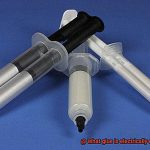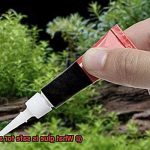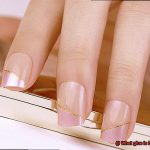Are you tired of worrying about the safety of adhesives when it comes to your skin? Whether it’s for a costume, false eyelashes, or medical bandages, finding the right adhesive can be a daunting task. But fear not. We’ve got you covered.
In this article, we’ll dive into the mysterious world of skin-safe adhesives. We’ll explore what glue is safe for skin and why it matters. From natural remedies to synthetic options, we’ll highlight different types of adhesives available and discuss essential factors to consider when selecting the right one for your needs.
But wait, there’s more. We’ll also share some useful tips and tricks to ensure seamless application without any adverse side effects. Whether you’re a makeup artist, performer, medical professional or just someone who wants to stick something to your skin with confidence – this is the place for you.
Join us on this sticky (but safe) adventure as we discover the best glue for your skin.
What Glue Is Not OK for Skin?
Contents
- 1 What Glue Is Not OK for Skin?
- 2 What is Medical Adhesive and How Does it Work?
- 3 What is Eyelash Adhesive and How Does it Work?
- 4 Potential Risks of Using Glue on the Skin
- 5 Patch Testing Before Using Glue on the Skin
- 6 How to Choose the Right Type of Glue for Your Skin
- 7 Tips for Applying Glue to the Skin Safely
- 8 Conclusion
Whether you’re fixing a cut or attaching false eyelashes, it’s crucial to know which types of glue are safe for skin use. Using the wrong type of glue can lead to painful skin irritation, rashes, and even chemical burns.
Medical adhesive is one of the safest options for using glue on your skin. This type of adhesive is designed explicitly for skin use and is commonly used in medical settings for wound closure or securing medical devices like catheters or electrodes. It is made from a type of cyanoacrylate that forms a strong bond when it comes into contact with moisture.
Eyelash adhesive is another safe option for using glue on the skin. This type of adhesive is often used in the beauty industry for attaching false eyelashes or other cosmetic applications. It typically consists of latex or acrylic, which is safe for skin use.
However, some types of glue should be avoided when it comes to using them on the skin:
- Superglue or cyanoacrylate glue: This type of glue is designed to bond quickly and strongly, making it great for fixing household items. But when it comes into contact with the skin, it can cause severe reactions such as chemical burns and even bond the skin together permanently.
- Rubber cement: This type of glue contains solvents that can be harmful to the skin and may cause irritation and rashes. It can also be challenging to remove from the skin once it dries.
- Epoxy glue: This type of glue is intended for surfaces such as metal, plastic, and wood and can cause severe irritation and chemical burns when it comes into contact with the skin.
To ensure you’re using the right type of glue on your skin, always read the label and follow the manufacturer’s instructions carefully. If you have sensitive skin or are prone to allergic reactions, perform a patch test before using any type of adhesive on your skin. And if you accidentally get glue on your skin and experience any adverse reactions, seek medical attention immediately.
What is Medical Adhesive and How Does it Work?
Medical adhesive is a remarkable type of glue that is specifically formulated for skin contact. It is widely used in the medical industry for various applications, including wound closure, surgical procedures, and attaching medical devices to the skin.
The primary function of medical adhesive is to create a strong bond between the skin and the material being attached. Medical adhesives can be classified into two broad categories: natural and synthetic. Natural adhesives, such as those derived from collagen or fibrin, are biocompatible and safe to use on living tissue without causing any adverse reactions. Synthetic adhesives, made from materials like cyanoacrylate or polyurethane, offer good biocompatibility and are also commonly used in medical applications.
Before applying medical adhesive, the skin surface must be thoroughly cleaned to remove any oils or moisture that may interfere with the bonding process. The adhesive is then carefully applied to the skin surface and allowed to dry or cure. Once cured, it forms a strong bond with the skin that can last for several days.
One crucial consideration when using medical adhesive is its strength and durability. A strong bond is essential for effective treatment, but it should also be easy to remove without causing damage or pain to the patient. Medical adhesives are designed to be easily removable by either dissolving them with a solvent or gently peeling them off.
Overall, medical adhesive is an indispensable tool in the medical industry. It provides a reliable method for securing materials to the skin without causing harm or irritation. When selecting a medical adhesive, it’s important to choose the right type for each application and follow proper application and removal techniques to ensure optimal results.
What is Eyelash Adhesive and How Does it Work?
Look no further than eyelash adhesive – a game-changing product for achieving the perfect lash look. As an expert in this field, let me tell you all about this amazing product and how it works.
Eyelash adhesive, also known as lash glue, is a special type of glue formulated for use on the delicate skin around the eyes. It’s designed to be gentle and non-irritating, ensuring that it doesn’t cause any harm or damage to the skin or eyes. Most eyelash adhesives are made with cyanoacrylate, a fast-drying acrylic resin commonly used in medical and cosmetic applications. This adhesive creates a strong bond between surfaces by reacting with moisture in the air to form a polymer chain. When applied to your natural lashes, it bonds with the false lash, resulting in a seamless and natural-looking finish.
There are two main types of eyelash adhesives available: clear and black. Clear adhesive dries transparent, making it ideal for use with light-colored lashes or for those who prefer a more natural look. Black adhesive dries dark, creating a more dramatic effect that’s perfect for those who want to make a statement.
It’s important to note that not all eyelash adhesives are created equal. Some contain harsh chemicals or irritants that can cause allergic reactions or other adverse effects. That’s why it’s crucial to read the ingredients list before purchasing an eyelash adhesive and opt for one that is specifically designed for use on the skin.
Potential Risks of Using Glue on the Skin
One of the primary concerns is the risk of allergic reactions. While most individuals assume they won’t be allergic to something as common as glue, it’s always better to err on the side of caution. Cyanoacrylate or latex-based adhesives are known allergens that can cause symptoms such as itching, redness, and swelling. These reactions can be uncomfortable and even painful, so it’s essential to patch test any adhesive before using it on your skin.

Another risk to keep in mind is skin damage. If the adhesive is too strong or left on for too long, it can cause damage to the skin’s surface. This can result in blisters, burns, or even scarring in severe cases. Therefore, always follow the instructions carefully and avoid leaving adhesive on for longer than necessary.
Moreover, some types of adhesives may contain harmful chemicals that can be absorbed into the skin and potentially cause health problems over time. Formaldehyde or toluene are examples of these harmful chemicals that can pose a significant risk to your health. So always check the ingredients list before purchasing any adhesive.

To avoid any potential risks associated with using glue on the skin, opt for medical-grade adhesives that are specifically designed for this purpose and have been tested for safety. Also, make sure to remove any adhesive promptly after use to prevent any damage to your skin.
Patch Testing Before Using Glue on the Skin
Before you dive in and apply glue to your skin, it’s crucial to perform a patch test. A patch test is a simple and quick way to determine if the glue is safe for use on your skin, and it can save you from potential allergic reactions, skin damage, and harmful chemicals.
To perform a patch test, apply a small amount of glue to an inconspicuous area of skin, such as the inside of your wrist or behind your ear. Then, leave the glue on for 24 hours and monitor the area for any signs of redness, itching, or irritation. This simple step can help you avoid unwanted reactions and ensure that your skin stays healthy and happy.
It’s important to note that even if a glue is labeled as safe for use on the skin, it may not be suitable for everyone. Factors such as skin type, allergies, and sensitivities can all affect how your skin reacts to different types of glue. So don’t skip the patch test.
When selecting a glue for use on the skin, it’s crucial to choose a product that is specifically formulated for this purpose. Regular household or industrial adhesives can contain harsh chemicals that can cause skin irritation or even chemical burns. Instead, opt for medical-grade adhesives, eyelash adhesives, or liquid latex.
Medical-grade adhesives are often used in hospitals and clinics for wound closure and other medical procedures. These adhesives are designed to be gentle on the skin and are safe for most people. Eyelash adhesives are another popular option for those looking to add some extra glam to their look. They’re designed specifically for use on the delicate skin around the eyes but are typically safe for use on other areas of the face as well. Liquid latex is also a great choice for special effects makeup and body art, as it creates a durable and flexible bond without causing irritation or damage to the skin.
How to Choose the Right Type of Glue for Your Skin
Using glue on your skin can be a tricky business. Choosing the wrong type of glue can lead to skin irritation, burns, or even allergic reactions. So, how do you choose the right type of glue for your skin? Here are five tips to consider:
Read the label
Not all glues are safe for use on skin. Some contain harmful chemicals that can cause damage or allergic reactions. Make sure to read the label of any glue product before using it on your skin. Look for products that are specifically designed for use on skin.
Consider the purpose
Different types of glues are designed for different purposes, such as crafting, medical use, or cosmetic use. If you’re using glue for a cosmetic purpose such as applying false eyelashes or glitter tattoos, choose a specially formulated cosmetic adhesive that is safe for use on the skin.
Know your skin type
Everyone’s skin is different and some people have sensitive skin that is easily irritated by certain types of adhesives. If you have sensitive skin or any existing skin conditions such as eczema or psoriasis, consult with a dermatologist before using any type of adhesive on your skin.
Follow instructions carefully
It’s important to follow the instructions carefully when using any type of adhesive on your skin. Always apply the glue in a well-ventilated area and avoid getting it in contact with your eyes or mouth. If you experience any adverse reactions such as itching or burning sensation, remove the glue immediately and seek medical attention if necessary.
Choose skin-safe options
There are several types of adhesives that are safe for use on skin, such as medical adhesive and eyelash glue. These types of adhesives are designed to be gentle on the skin while still providing a strong hold.
Tips for Applying Glue to the Skin Safely
When it comes to applying glue to your skin, you must prioritize safety above everything else. After all, certain types of glue can cause severe harm, and you wouldn’t want to risk that. Here are seven tips to help you apply glue safely to your skin:
Tip #1: Use Only Safe Glue
Always use glue labeled as safe for skin contact. Look for products designed explicitly for cosmetics or medical purposes. Avoid any glue that is not safe for skin contact since it can cause serious harm.
Tip #2: Test on a Small Area

Before applying glue to a larger area of your skin, test it on a small area first. This will help you determine if you have any sensitivity or allergic reactions to the glue. If you experience any discomfort or irritation, do not proceed with using the glue on a larger area.
Tip #3: Avoid Sensitive Areas
Do not apply glue to sensitive areas of your skin, such as around the eyes, mouth, or genitals since these areas are easily irritated and may cause discomfort.
Tip #4: Clean and Dry Your Skin
It’s essential to clean and dry the area of skin where you will apply the glue. This step ensures that the glue adheres correctly and doesn’t cause any irritation.
Tip #5: Apply a Thin Layer
Apply a thin layer of glue to your skin using a clean applicator like cotton swabs or brushes. Using too much glue can cause irritation and may not adhere properly.
Tip #6: Allow Glue to Dry Completely
Allow the glue to dry completely before touching or manipulating the area. This step ensures that the glue sets correctly and doesn’t rub off onto clothing or other surfaces.
Tip #7: Remove Gently
If you need to remove the glue from your skin, do so gently using an oil-based remover or warm soapy water. Do not try to pull or scrape the glue off as this can cause skin irritation or damage.
Conclusion
In summary, the quest for a suitable adhesive for skin use can be overwhelming. However, it doesn’t have to be a hassle. Whether you’re using glue for a costume, false eyelashes, or medical bandages, safety should always come first. It’s crucial to know which types of glue are safe for your skin.
Medical adhesive and eyelash adhesive are among the safest options for using glue on your skin. These products are specifically designed for cosmetic and medical purposes and have been tested extensively to ensure their safety.
On the other hand, some types of glue should never be used on the skin. Superglue or cyanoacrylate glue, rubber cement, and epoxy glue can cause severe skin reactions. Therefore, it’s essential to perform a patch test before using any type of adhesive on your skin.
When selecting an adhesive for use on your skin, choose products that are specifically designed for cosmetics or medical purposes. Always prioritize safety above everything else when applying glue to your skin by cleaning and drying the area before application.
It’s also crucial to follow the manufacturer’s instructions carefully and avoid touching or manipulating the area until the glue has dried completely. Lastly, remove the glue gently using an oil-based remover or warm soapy water.
In conclusion, with proper knowledge and precautions, you can find a safe and suitable adhesive for all your skin needs without compromising your health.






